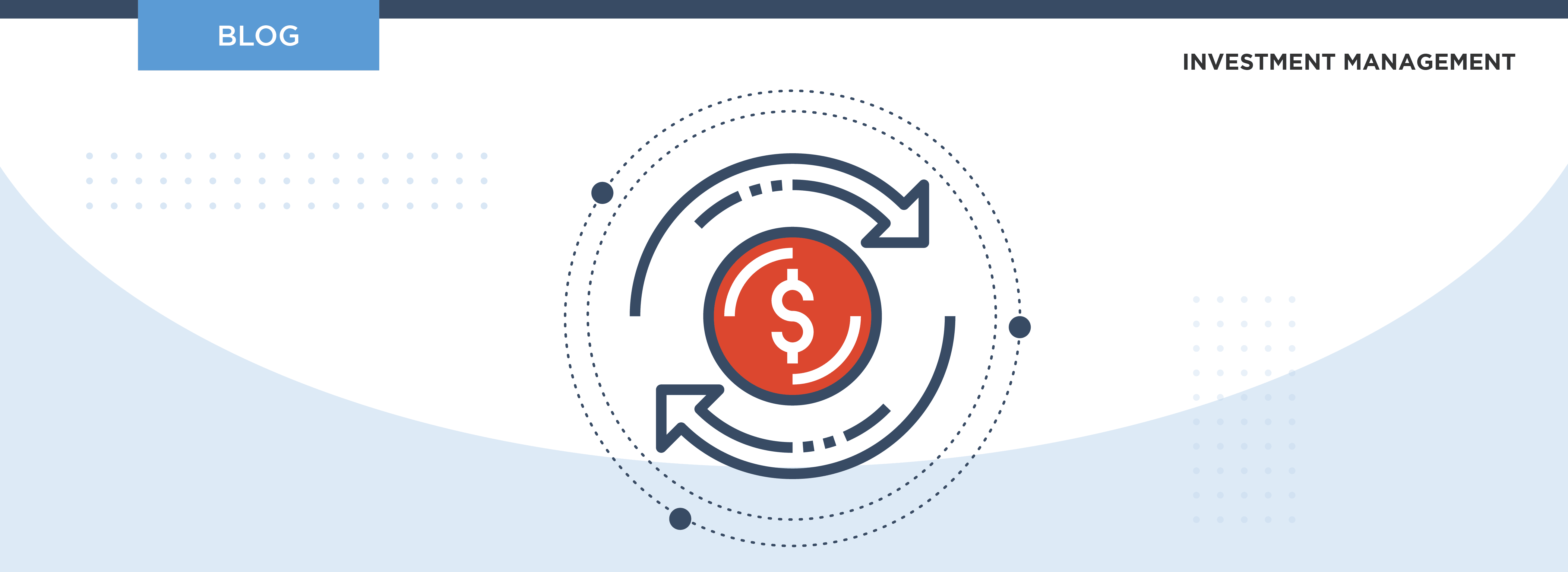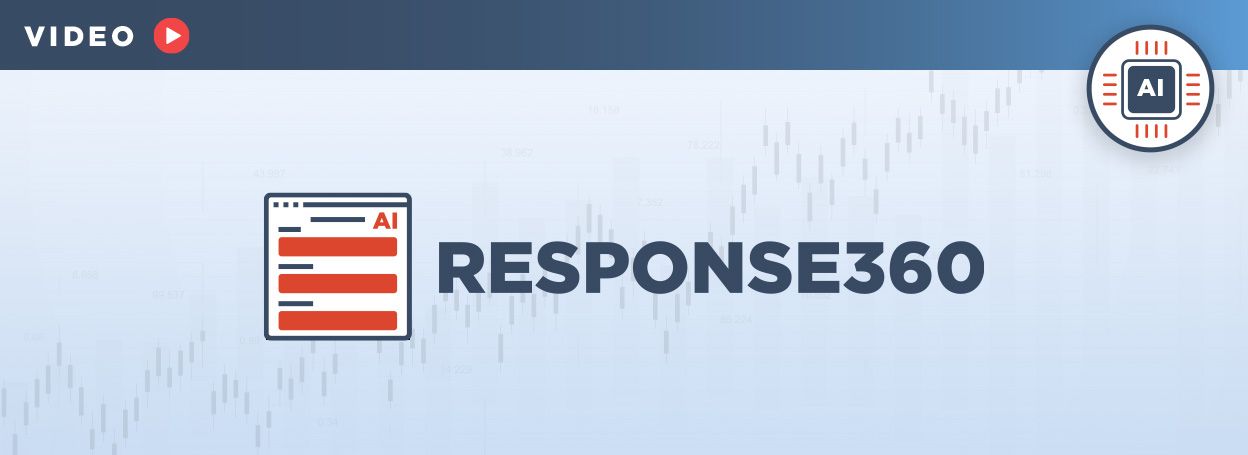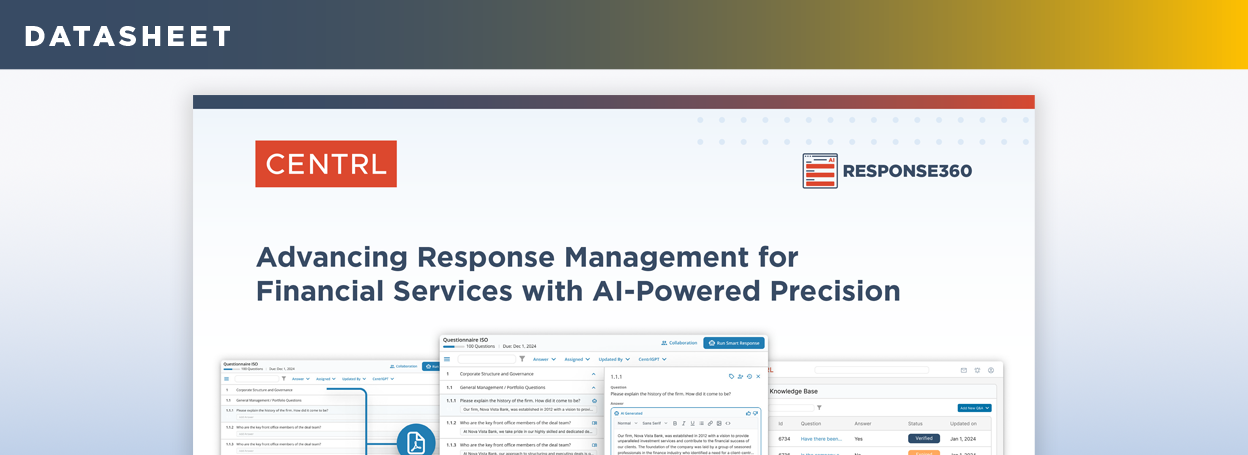The Future of DDQ/RFP Responses in Asset Management: Why Change is Inevitable

As investor expectations rise, regulations tighten, and managers diversify across strategies, geographies, and vehicles, the volume and complexity of DDQ and RFP requests are ballooning. Traditional approaches to answering these, such as manually updating response libraries, using spreadsheet-based tracking, or relying on fragmented, legacy content management systems, are quickly reaching a breaking point.
On the surface, it might seem that layering a tool like ChatGPT onto a response workflow would provide the efficiencies managers need. But my conversations with asset managers tell a different story, one in which operational bottlenecks are more deep-seated and nuanced than drafting narrative responses alone. These issues cannot be solved by a simple text generator; they require domain-trained intelligence, structured workflows, and automation that’s purpose-built for the industry’s complexity.
1. Keeping Data (“answer libraries”) Up to Date
An answer library is a centralized repository of previously approved responses meant to speed up future DDQ/RFP completion. In practice, however, these libraries become outdated almost as quickly as they are built.
Key reasons this is such a problem:
High rate of change across the firm: Unlike many other industries, asset management data by its nature is highly dynamic. Performance and exposure information changes every period and teams and strategies are constantly growing and evolving, not to mention ever-changing regulatory disclosure requirements.
Manual upkeep is impractical: Maintaining accuracy across hundreds or thousands of answer “snippets” takes enormous coordination between IR, compliance, legal, risk, operations, and investment teams.
Stale responses are unacceptable: Outdated answers not only undermine credibility with investors, they can also pose real legal and regulatory risks if they misstate processes that have since changed.
As a result, what was intended as a “short-cut” often becomes a liability. Keeping the library genuinely usable and up-to-date has become mission-critical and overwhelmingly difficult to do manually.
2. Digitizing Manual Paper Questionnaires
Even in today’s digital age, many DDQs still arrive in non-standard formats, Excel spreadsheets with inconsistent structures, Word documents with nested tables, or scanned PDFs from consultants.
The challenge with legacy systems is that they:
Struggle to parse unstructured formats, often requiring manual cut-and-paste to load each new document into the system.
Lose important context when importing, such as sub-questions, conditional logic, or attached documents.
Slow down time-to-response, particularly during peak fundraising, when dozens of requests may land at once
The consequence is a tedious “human bridge” where staff burn hours transforming poorly formatted questionnaires just so they can start to answer them. This bottleneck forces managers into reactive mode and drains resources that could be better spent on high-value client interactions.
3. Ensuring Consistant Answers That Meet Compliance Standards
While speed is crucial, asset managers are heavily regulated, which means precision is non-negotiable. Generic drafting tools can quickly produce answers. But they lack the domain-specific knowledge needed to truly gain efficiencies.
Generic drafting tool answers often:
Lack firm-specific nuance, creating inconsistencies across responses.
Deviate from compliance-approved language, introducing regulatory risk.
Generate duplicative or conflicting answers, especially when multiple versions of similar language exist in the library.
These shortcomings not only slow down review cycles but also erode confidence in the firm’s diligence process. Asset managers need responses that are not just fast, but verbatim accurate, audit-ready, and fully aligned with compliance-approved language.
What Firms Need Instead is a System That Can Intelligently:
Surface the exact, approved language already signed off by compliance.
Detect new or evolving questions and recommend language that maintains consistency with policy and disclosure standards.
Ensure traceability, so every response can be tied back to a source document and approval trail in case of audit.
What the Next Generation Must Deliver
Collectively, these challenges are pushing asset managers toward a new set of expectations for DDQ/RFP response platforms, expectations that go far beyond basic workflow automation.
The next generation of solutions must be:
AI-Powered, But Context-Aware
Managers don’t need generic drafting help; they need systems that understand the nuance of asset-class-specific language, historical responses, firm policy constraints, and regulatory posture to suggest accurate, approved, and compliant responses.
Dynamic and Self-Updating Content Libraries
Answer libraries must evolve into living databases that automatically flag outdated information, ingest new policies, and learn from recent responses, eliminating the current decay issue that plague static libraries. We cannot understate the importance of automation in this process, manual processes inevitably break down and undermine most of the advantages and embedded efficiencies of modern digital solutions.
Intelligent Document Ingestion Tools
Fast and accurate digitization of incoming offline DDQs is no longer optional. Advanced NLP and machine-learning-driven ingestion engines are needed to map heterogeneous questionnaires into structured formats, without manual effort.
Compliance-First Response Generation
Rather than generating new language from scratch, next-gen systems must identify and retrieve verbatim, pre-approved language blocks wherever possible, while still allowing for intelligent adaptation to new questions when appropriate.
As the diligence landscape grows more complex, asset managers can no longer rely on manual processes, static libraries, or generic drafting tools. The future lies in intelligent, domain-trained platforms that combine AI with compliance-first workflows, dynamic content management, and seamless document ingestion. Those who embrace this next generation of solutions will not only meet rising investor and regulatory demands but also transform diligence from a reactive burden into a true competitive advantage.


